Silver Tree Chaser
Bronze Member
It’s been a while since I last posted some finds, so here are some highlights from several recent hunts and some comments. Feedback on the subject matter at the end of post are welcomed.
Despite exposure to the elements, this 1787 Fugio copper found on Saturday has just enough details for a variety ID. For pre-federal and early state-issued coppers, variety ID is a must, as even a corroded, unsightly copper can prove to be a tremendous recovery if you happen to recover an ultra-rare variety. This Fugio looked the part with club rays, but it proved to be a more common W-6505, Newman 10-T variety, as listed in Bowers’ book. It still beats a KGII by a whole lot. It’s the best preserved Fugio of the three that I’ve now recovered over the years. It was found at a cellar hole that offered up a GWI button last year.
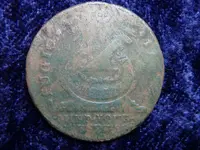
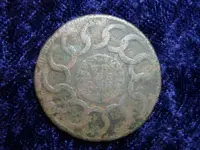
Along with the Fugio, I recovered a nice, decorative dandy button only a few feet away. I haven’t found one as nice as this specimen in a few years. I also dug another copper nearby, but it was toasted. Finally, the site offered a silver coin. I was certain of it being a Liberty Seated coin, but it was a Barber dime perhaps dropped by a hunter. It was very dark with toning, but I cooked it with electrolysis, which always yields great results. See before and after images.
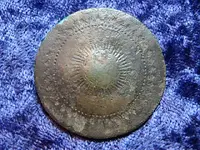
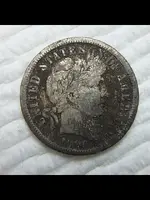
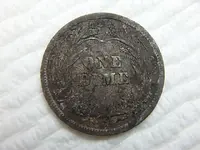
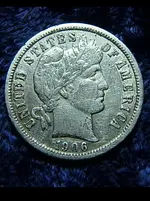
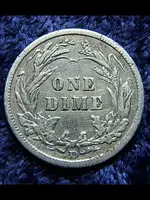
Here’s a 1909 Barber Half from a farm field that’s offered up a few Spanish cobs years ago. The property owner is a 3rd generation farmer, so I gave him the coin. His grandad started the farm in 1913 and perhaps even lost the coin. I was glad to give it to him; his mother was born on the same year — 1909. I got the case for the coin online for about $2 a piece. It’s a good deal — the clear cover is glass and won’t scratch like gem cases.
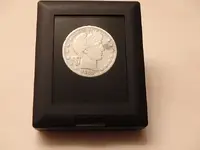
I’ve dug a small number of Civil War buttons over the years, but this one from another cellar hole came with a surprise. Along with a trace of gilt, the button’s loop held what I mistook for a root. It’s actually 160+ year old thread still tied in place! Now that soldier knew how to tie a knot. Along with the eagle button, I came upon a Civil War period lice comb while digging along the foundation. It’s made of ebonite, vulcanized natural rubber patented by Charles Goodyear in 1844. What’s not to know in the age of internet? This type of lice comb was typically carried by soldiers in the Civil War.
Now that soldier knew how to tie a knot. Along with the eagle button, I came upon a Civil War period lice comb while digging along the foundation. It’s made of ebonite, vulcanized natural rubber patented by Charles Goodyear in 1844. What’s not to know in the age of internet? This type of lice comb was typically carried by soldiers in the Civil War.
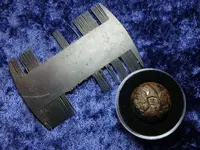
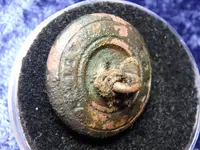
Another cellar hole, another find to keep me going. It’s a saloon token from 1863.
It’s a saloon token from 1863.
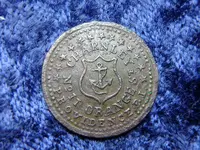
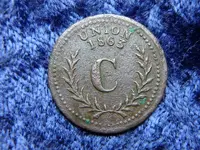
So last few finds are in a group shot below — two 17th century spur buckles, an 18th century shoe buckle, and perhaps a gun part owing to the GR (King George) stamp.
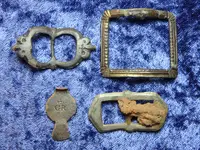
And here’s the story behind these finds. These finds are from a promising site dating back to the 1640’s and now situated in a hay field. I rarely recover intact spur buckles from the 1600’s. I recovered other finds as well, but sadly no coins. I worked the site for a good eight hours, but I’m certain that a great deal more remains to be found. So what’s my problem? I like to be forthright with property owners, so disclose everything that I recover and understand that they might wish to have a portion of what is found or even half of everything, although such a request has never been made before — until now. The woman who owns the property wants all of it — everything. I have all the finds at this time, as I told that I would preserve it for her first. It’s now all cleaned up, and I’m going to let her have it — all of it. I have a few thoughts on the whole experience, but I’ll only share this one view — she’ll get 100% of what I’ve found, but 0% of everything else that still remains uncovered. I’m sure I could find a great deal more and would have been happy to share it equitably with the property owner, but as it stands at present, what remains buried on her property will never see the light of day. I will tell her exactly this respectfully. Perhaps she will have a change of heart, but I’m not sure of any further relations regardless of her repsponse. There’s more to the story than I care to relate. Thanks for looking and good hunting to all.
I have all the finds at this time, as I told that I would preserve it for her first. It’s now all cleaned up, and I’m going to let her have it — all of it. I have a few thoughts on the whole experience, but I’ll only share this one view — she’ll get 100% of what I’ve found, but 0% of everything else that still remains uncovered. I’m sure I could find a great deal more and would have been happy to share it equitably with the property owner, but as it stands at present, what remains buried on her property will never see the light of day. I will tell her exactly this respectfully. Perhaps she will have a change of heart, but I’m not sure of any further relations regardless of her repsponse. There’s more to the story than I care to relate. Thanks for looking and good hunting to all.
Despite exposure to the elements, this 1787 Fugio copper found on Saturday has just enough details for a variety ID. For pre-federal and early state-issued coppers, variety ID is a must, as even a corroded, unsightly copper can prove to be a tremendous recovery if you happen to recover an ultra-rare variety. This Fugio looked the part with club rays, but it proved to be a more common W-6505, Newman 10-T variety, as listed in Bowers’ book. It still beats a KGII by a whole lot. It’s the best preserved Fugio of the three that I’ve now recovered over the years. It was found at a cellar hole that offered up a GWI button last year.


Along with the Fugio, I recovered a nice, decorative dandy button only a few feet away. I haven’t found one as nice as this specimen in a few years. I also dug another copper nearby, but it was toasted. Finally, the site offered a silver coin. I was certain of it being a Liberty Seated coin, but it was a Barber dime perhaps dropped by a hunter. It was very dark with toning, but I cooked it with electrolysis, which always yields great results. See before and after images.





Here’s a 1909 Barber Half from a farm field that’s offered up a few Spanish cobs years ago. The property owner is a 3rd generation farmer, so I gave him the coin. His grandad started the farm in 1913 and perhaps even lost the coin. I was glad to give it to him; his mother was born on the same year — 1909. I got the case for the coin online for about $2 a piece. It’s a good deal — the clear cover is glass and won’t scratch like gem cases.

I’ve dug a small number of Civil War buttons over the years, but this one from another cellar hole came with a surprise. Along with a trace of gilt, the button’s loop held what I mistook for a root. It’s actually 160+ year old thread still tied in place!


Another cellar hole, another find to keep me going.


So last few finds are in a group shot below — two 17th century spur buckles, an 18th century shoe buckle, and perhaps a gun part owing to the GR (King George) stamp.

And here’s the story behind these finds. These finds are from a promising site dating back to the 1640’s and now situated in a hay field. I rarely recover intact spur buckles from the 1600’s. I recovered other finds as well, but sadly no coins. I worked the site for a good eight hours, but I’m certain that a great deal more remains to be found. So what’s my problem? I like to be forthright with property owners, so disclose everything that I recover and understand that they might wish to have a portion of what is found or even half of everything, although such a request has never been made before — until now. The woman who owns the property wants all of it — everything.
 I have all the finds at this time, as I told that I would preserve it for her first. It’s now all cleaned up, and I’m going to let her have it — all of it. I have a few thoughts on the whole experience, but I’ll only share this one view — she’ll get 100% of what I’ve found, but 0% of everything else that still remains uncovered. I’m sure I could find a great deal more and would have been happy to share it equitably with the property owner, but as it stands at present, what remains buried on her property will never see the light of day. I will tell her exactly this respectfully. Perhaps she will have a change of heart, but I’m not sure of any further relations regardless of her repsponse. There’s more to the story than I care to relate. Thanks for looking and good hunting to all.
I have all the finds at this time, as I told that I would preserve it for her first. It’s now all cleaned up, and I’m going to let her have it — all of it. I have a few thoughts on the whole experience, but I’ll only share this one view — she’ll get 100% of what I’ve found, but 0% of everything else that still remains uncovered. I’m sure I could find a great deal more and would have been happy to share it equitably with the property owner, but as it stands at present, what remains buried on her property will never see the light of day. I will tell her exactly this respectfully. Perhaps she will have a change of heart, but I’m not sure of any further relations regardless of her repsponse. There’s more to the story than I care to relate. Thanks for looking and good hunting to all.Amazon Forum Fav 👍
Upvote
60




 Only a few days before my first big search, I spoke by phone with a bottle digger that I had recently met. We talked about digging together, and he suggested this fantastic site for digging bottles — the same site that I just got permission to dig!
Only a few days before my first big search, I spoke by phone with a bottle digger that I had recently met. We talked about digging together, and he suggested this fantastic site for digging bottles — the same site that I just got permission to dig!  When I asked how he had secured permission and mentioned the trespassing signs, he replied — “It’s easier to beg for forgiveness, then beg for permission.” With some dismay, I asked if he had done much digging. He replied, “Are you kidding? For a few years, I dug the bleep out of that place.”
When I asked how he had secured permission and mentioned the trespassing signs, he replied — “It’s easier to beg for forgiveness, then beg for permission.” With some dismay, I asked if he had done much digging. He replied, “Are you kidding? For a few years, I dug the bleep out of that place.”  I still searched the site, as best I could between all the trenches left behind by the jerk. I found one large cent and not much else. I gave the coin to the owner, and now she’s expecting the finds from the other site as well. Really, I think it’s all a bit funny. It helps to remind me that this is a hobby to be enjoyed, regardless of the outcome. But this has been a bit bewildering. What path to take? Honest to a fault, trespassing thief, or somewhere in between?
I still searched the site, as best I could between all the trenches left behind by the jerk. I found one large cent and not much else. I gave the coin to the owner, and now she’s expecting the finds from the other site as well. Really, I think it’s all a bit funny. It helps to remind me that this is a hobby to be enjoyed, regardless of the outcome. But this has been a bit bewildering. What path to take? Honest to a fault, trespassing thief, or somewhere in between? 


![PB170375_01[1].webp PB170375_01[1].webp](https://www.treasurenet.com/data/attachments/1428/1428801-dab3f9985736c0d640418762cc4f70b5.jpg?hash=z5bKaoyUd2)
![PB170393[1].webp PB170393[1].webp](https://www.treasurenet.com/data/attachments/1428/1428803-5c278e8e8eb7c1618ec1b233dbd16e95.jpg?hash=LrpXXdgdGd)
